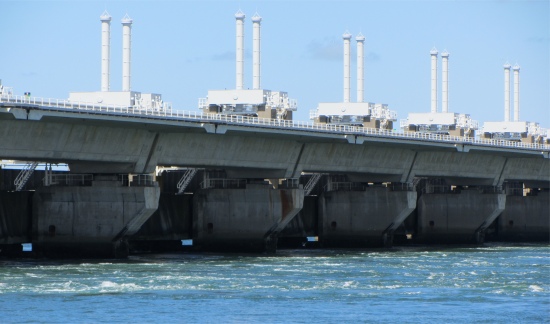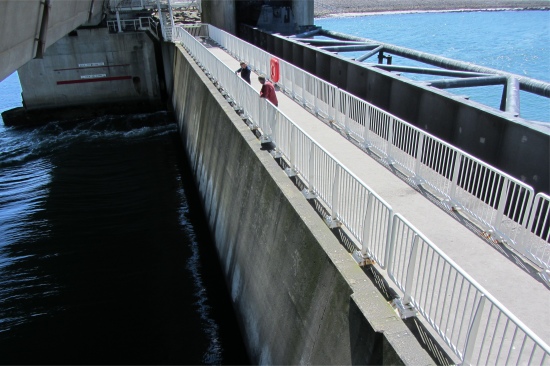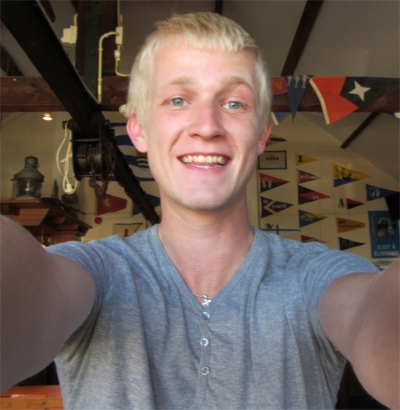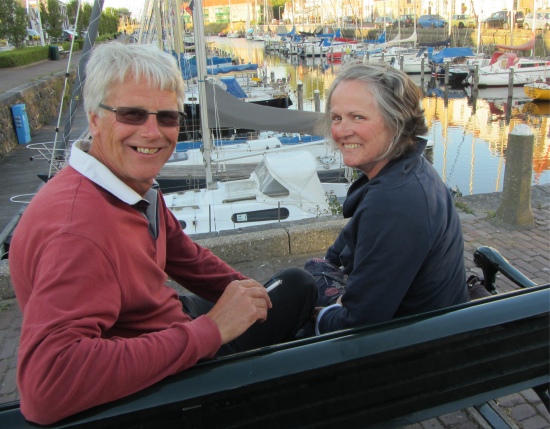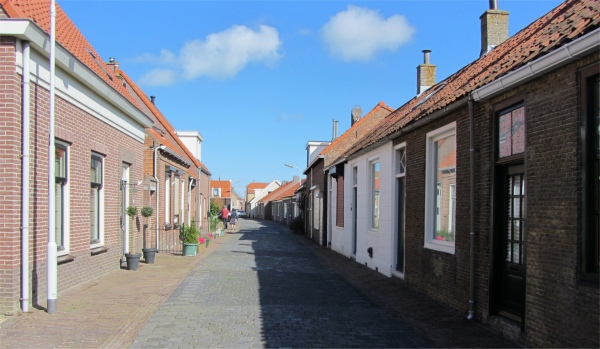 Walking to the Brouwershaven Bus Stop. The Dutch are Obsessed with Cleanliness |
We had a tete-a-tete to discuss the state of the tides and weather forecasts over the forthcoming days, and how to work our way around to Ostend by Friday. Then it was a quick walk around the market, and as in Goes, just clothes and junk for sale. With nothing to hold our interest, we caught the bus to Noordwelle, a transit stop on our way to Neeltje Jans.
There was only one other passenger who we fell into conversation with, a lovely old chap. He spoke good English, and proceeded to give us directions to our destination. "I learned English, German and French at school," he told us, "and nowadays children can choose between French and Spanish." He had spent some years at Sneek in Friesland before moving on to become a head-teacher at Zierikzee until he retired.
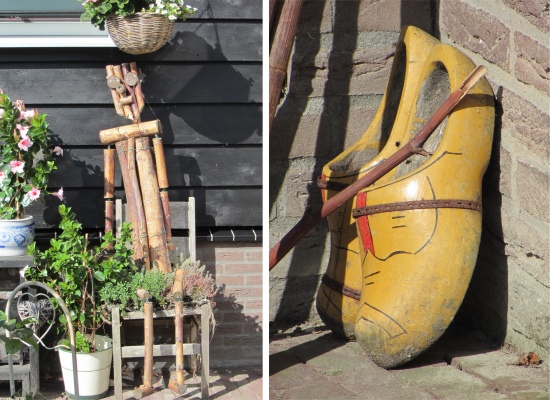 Typical Brouwershaven Front Yards |
Now he spent summer months in a mobile home by the coast, indeed he swam in the sea every day from May to October, despite the cold 12 degrees water temperature during spring. He was a really, friendly chap who had found true happiness.
We transferred buses at Noordwelle, and caught the bus to Neeltje Jans. This bus took us through lush agricultural land and chocolate box villages and towns. A noteworthy settlement was Burgh-Haamstede, very much a tourist trap. The town actually consisted of two villages: Burgh and Haamstede which were still clearly recognizable. It contained all the elements necessary for a cosy getaway: a 13th century castle, forest and beaches within easy reach. The most famous building was undoubtedly the Wester Lichttoren at nearby New Haamstede. This red and white lighthouse became famous when it was depicted on the banknote of 250 guilders. There were countless immaculate houses in the town, all different in style, and all with large manicured gardens. Bikes ruled the streets, not surprising really since the whole region seemed to be full of campsites and caravan parks, all offering bike hire facilities. Peppered across the landscape were countless white signs with red lettering, all direction signs for cyclists to navigate around the myriads of cycle paths. Our bus passed a large peloton of children on bikes. Our driver tooted his horn, and they all waved. What a pleasant part of the world this was.
Soon we were traversing the Pijlerdam and sluices that separate the Oosterschelde from the North Sea. Half way across the Oosterscheldedam that connects Noord-Beveland and Schouwen-Duiveland, an artificial island was constructed to facilitate the construction of the dam. This island was Neeltje Jans, named after a nearby sand bar. We had come here with the specific purpose of visiting the Deltaworks Expo sited on this island. The bus dropped us off at a stop by the busy highway, and we wandered down a narrow, shell strewn path to the Expo.
The entrance fee was a tad expensive, but well worth it. A 30 minute film with English subtitles gave us an excellent introduction to the history of the coastal flooding problems, the large flood of 1953 with its terrible aftermath, and the subsequent creation of the Deltaworks project to ensure the whole of the Netherlands was adequately protected. Some impressive engineering had been conducted. Other static displays and videos went into in-depth history, the a human story 1953 flood on a cold February night, dyke building techniques, more recent protection systems and philosophies, and the ecology and the need to preserve it. It was all done very well.
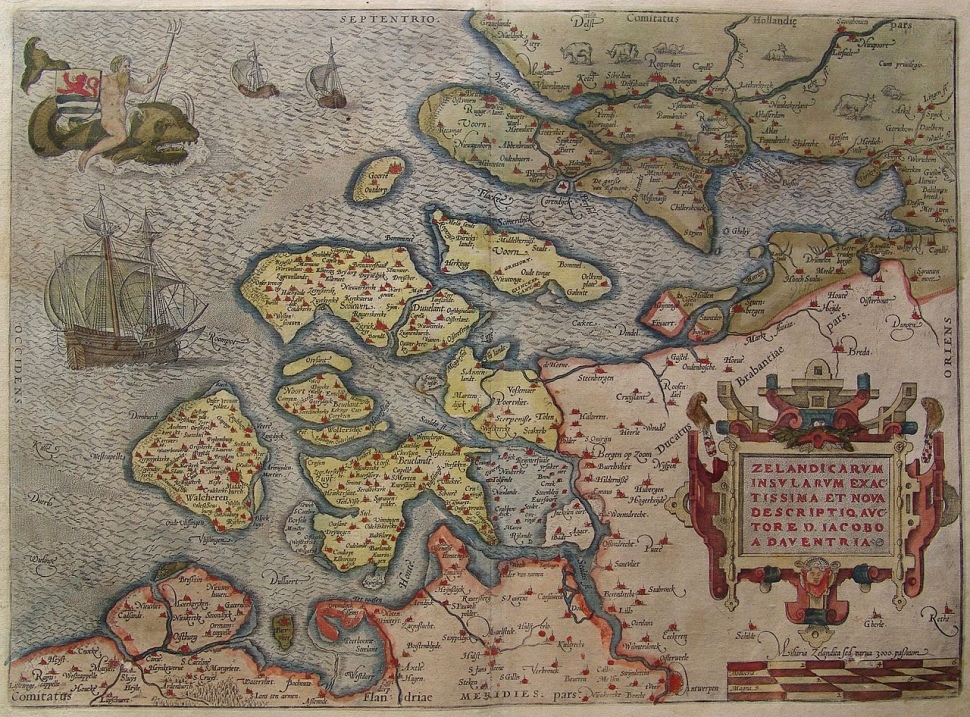 The Delta in 1580 from Zelandicarum by Jacob van Deventer |
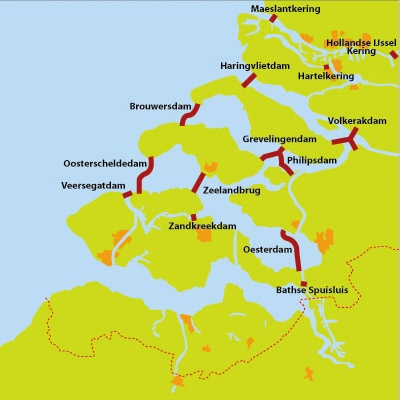 The Deltaworks Today |
Twenty days after the flood of 1953, the Delta commission was inaugurated. The commission would give advice about the execution of the Deltaplan, which would, in the long run, increase the safety of the Delta area. Although safety was the number one priority, the seaways De Nieuwe Waterweg and the Westerschelde would have to stay open, because of the economic importance of the ports of Rotterdam and Antwerp. In order to be able to build dams in the rivers' mouths, some auxiliary dams would first have to be built in the Zandkreek, the Krammer, the Grevelingen, and the Volkerak. These dams were known as "compartment dams", since they would divide the large area of water into multiple compartments. In 1959, the Delta Law was passed, in order to organise the construction of the dams. The building of the "Delta Works" was such an enormous project, that it was sometimes referred to as the "eighth wonder of the world" - and not without good reason.
By 1958 the first Deltawork was already operational. It was the storm barrier in the river Hollandse Ijssel. This barrier (not a dam) was of great importance because it protected the densely populated western part of the Netherlands (known as "the Randstad") against future flooding. Three years later, in 1961, two more mouths were closed: the Veerse Gat and the Zandkreek. The water between these dams soon became fresh and is now known as the Veerse Meer.


